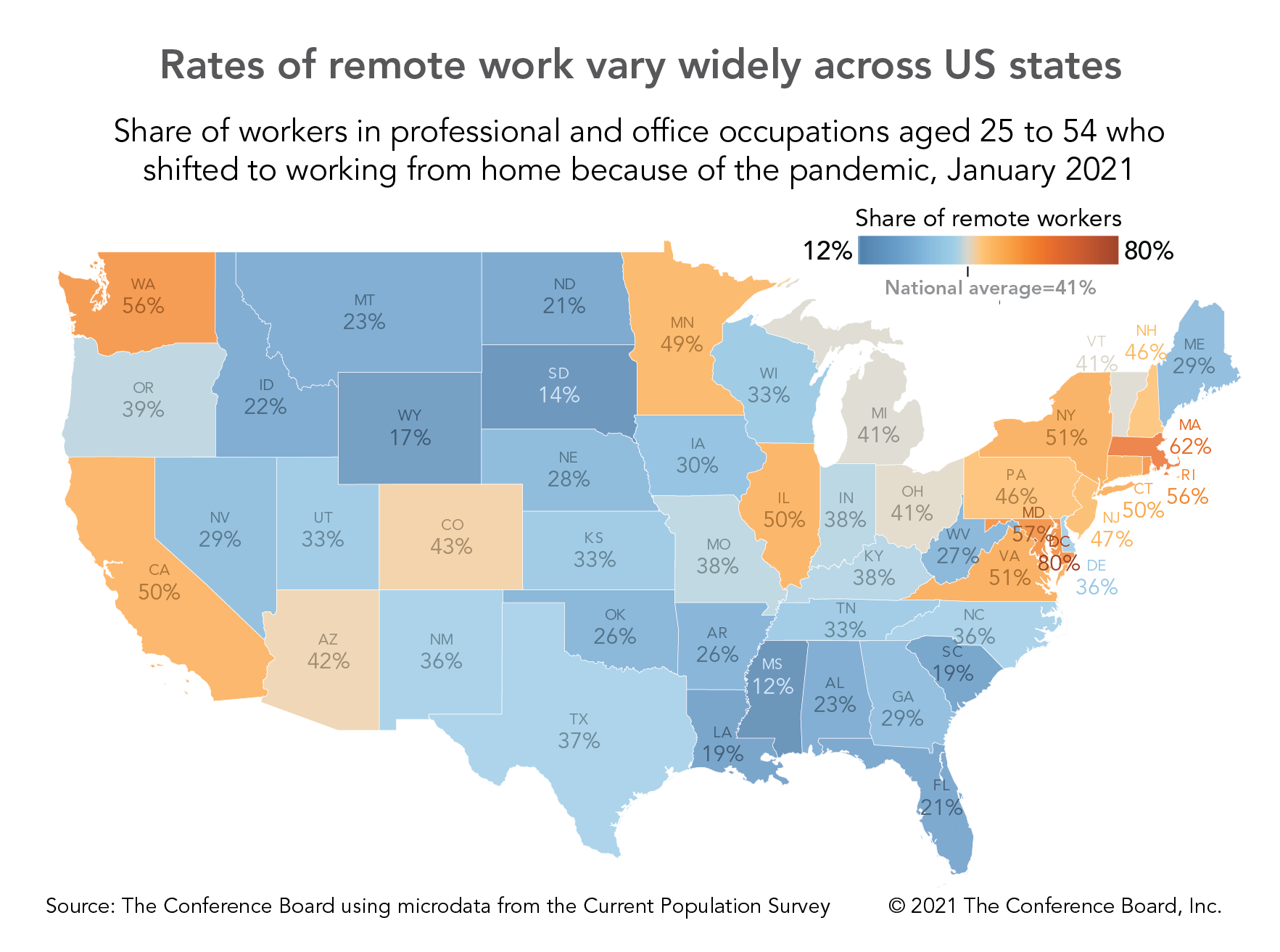
March 10, 2021 | Chart

The prevalence of remote work because of the pandemic* varies significantly across US states. Workers in their prime (aged 25 to 54) in professional and office jobs on the West coast and in the Northeast were much more likely to work from home.
Some of the differences in remote work rates could be explained by differences in industry and occupational composition. However, we find that even after accounting for other factors (gender, age, race, family structure, industry, and occupation), workers in states with more restrictive social distancing policies were much more likely to work remotely.
The discrepancies in remote work rates across regions may outlive the pandemic because of habit formation. Employees who worked remotely during the pandemic may be more likely to permanently adopt working from home as an option compared to those who returned to their offices sooner over the course of the pandemic.
For more insights on remote work, read our new report: COVID-19's Biggest Legacy: Remote Work and Its Implications for the Postpandemic Labor Market in the US
*Remote workers answered yes to this survey question: “At any time in the last four weeks, did you telework or work at home for pay because of the coronavirus pandemic?” (supplemental COVID-19 question in the Current Population Survey).

July 27, 2022 | Newsletters & Alerts

May 11, 2022 | Newsletters & Alerts